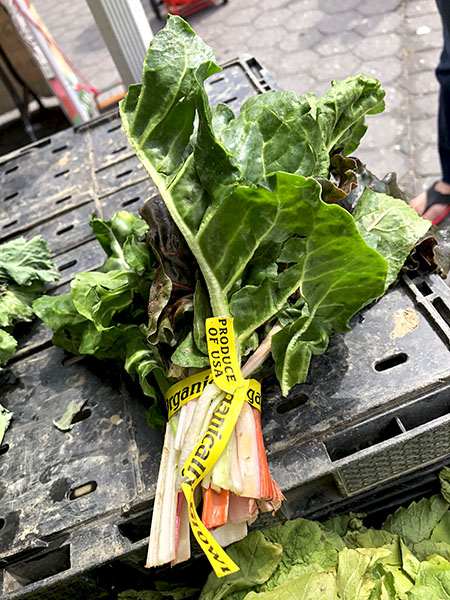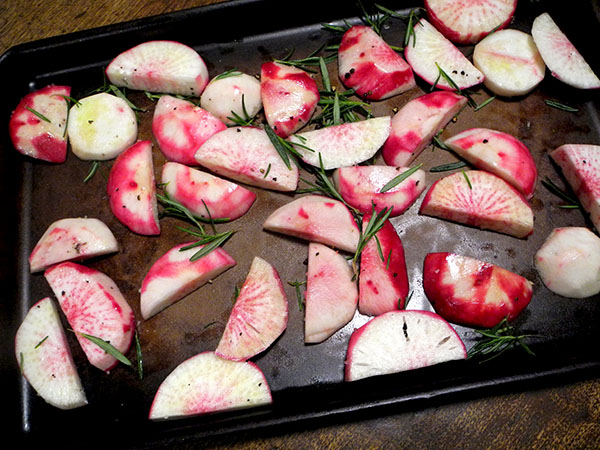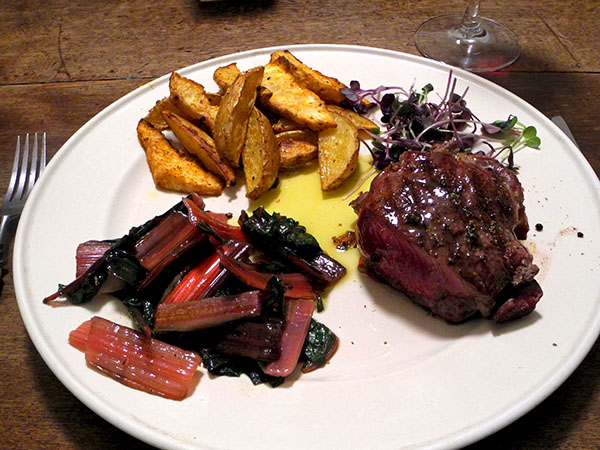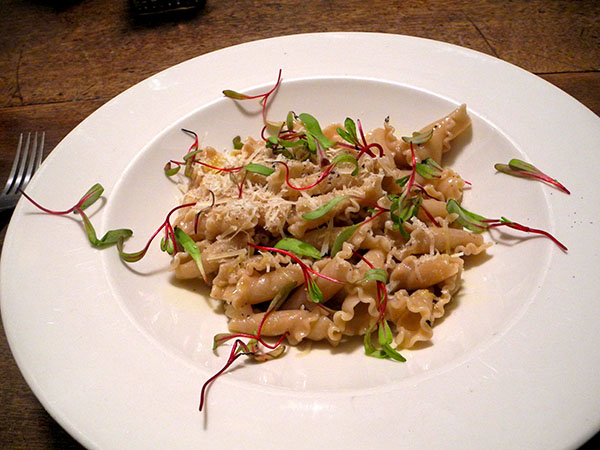
Last night we had some old friends over for dinner. They were visiting their previous city from their current home in the Southwest. We hadn’t seen them in at least 15 years, and I was a little worried about what to put on the table, so I just went with meat and potatoes – and chard of course! Also of course, virtually everything was local.
It was a pretty straightforward meal, but it included a special treat: Local ramps, the first of the season, which, for the occasion, I made into a composed butter which topped the grilled New York New York strip steaks.
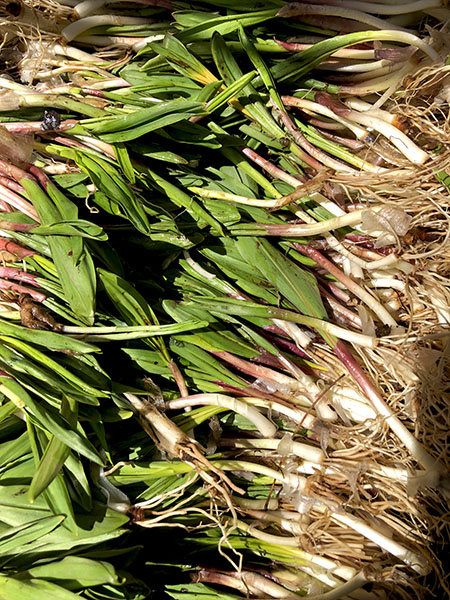
The potatoes were dark purple, inside and out, and they stayed purple, inside and out, after roasting.
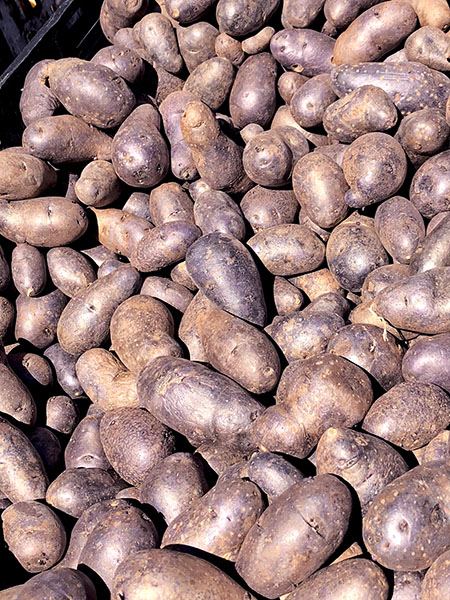
The chard was the color of a modestly-showy rainbow, and those colors too were fast.

We anticipated the meal with some nibbles.
- small 2-toned French Breakfast radishes from Eckerton Hill Farm, served with a small bowl of Maldon salt, and some surprisingly tasty Firehook garlic thyme ‘Mediterranean Baked Crackers’, from Virginia, via the Chelsea Whole Foods Market
- the wine was an Italian (Veneto) sparkling white, Milleri Millesimato Prosecco, the gift of a friend
We then went right into the main course.
- four 8-ounce New York strip steaks from Lowland Farm, in Orange County, New York (by the ‘Black Dirt’ fields of Pine Island), brought to room temperature and dried, sprinkled with a generous amount of freshly roughly-ground black pepper, placed on a very hot cast iron pan grill for just about 10 minutes, turning twice, salting each side after it had been been turned, removed and arranged on the 4 plates, finished with ramp butter using small, first-of-the-season woodland ramps from Lucky Dog Organic, part of an organic lemon from Whole Foods Market, and some Organic Valley ‘Cultured Pasture Butter’
- ‘Magic Molly‘ fingerling potatoes (21 ounces) from Mountain Sweet Berry Farm, scrubbed, then, unpeeled, dried, sliced lengthwise, mixed inside a bowl with one medium red onion from S. & S.O. Produce Farms, a tablespoon or two of Portuguese olive oil, sea salt, freshly-ground black pepper, a piece of crushed dried orange/gold habanada pepper, a small handful of very fresh rosemary leaves from rosemary from Stokes Farm, stripped from their stems, everything arranged on the surface of a large well-seasoned Pampered Chef unglazed ceramic oven pan, roasted at 400º for about 30 minutes, or maybe a little longer, arranged on the plates, sprinkled with micro scallion from Two Guys from Woodbridge
- two bunches of rainbow chard from Norwich Meadows Farm, wilted in a couple tablespoons of Portuguese olive oil from Whole Foods Market, in which 3 Rocambole garlic cloves from Keith’s Farm had first been heated and slightly softened, seasoned with sea salt and freshly-groun black pepper, and finished with a little lemon juice and a drizzle of olive oil
- the wine was a Portuguese (Dão) red, Quinta da Pellada Dac Red Blend 2013, from Garnet Wines
There was a modest cheese course.
- two goat cheeses from Consider Bardwell Farm, in the Unions Square Greenmarket, their very white, ‘Danby’ and the more rustic, ‘Manchester’
- slices of a Bien Cuit bakery ‘Campagne’ traditional sourdough from Foragers Market
- dollops of ‘Oregano Garlic Jam’ from Massachusetts’ Berkshire Berries, purchased at their table in the Union Square Greenmarket
- the wine was a California (Sonoma) white, Scott Peterson Rumpus California Chardonnay 2016, from Naked Wines
And, as the evening, and the conversation, continued, a sweet dessert course as well.
- ‘Lemon Zest’ sorbet from Vermont’s Blue Moon Sorbet, from Foragers Market, served in 4 small bowls along with very thin slices of a Sundance Organics Meyer lemon from Foragers Market, and topped with zest from the other end of the lemon, and garnished with one of Anna’s Ginger Swedish Thins


